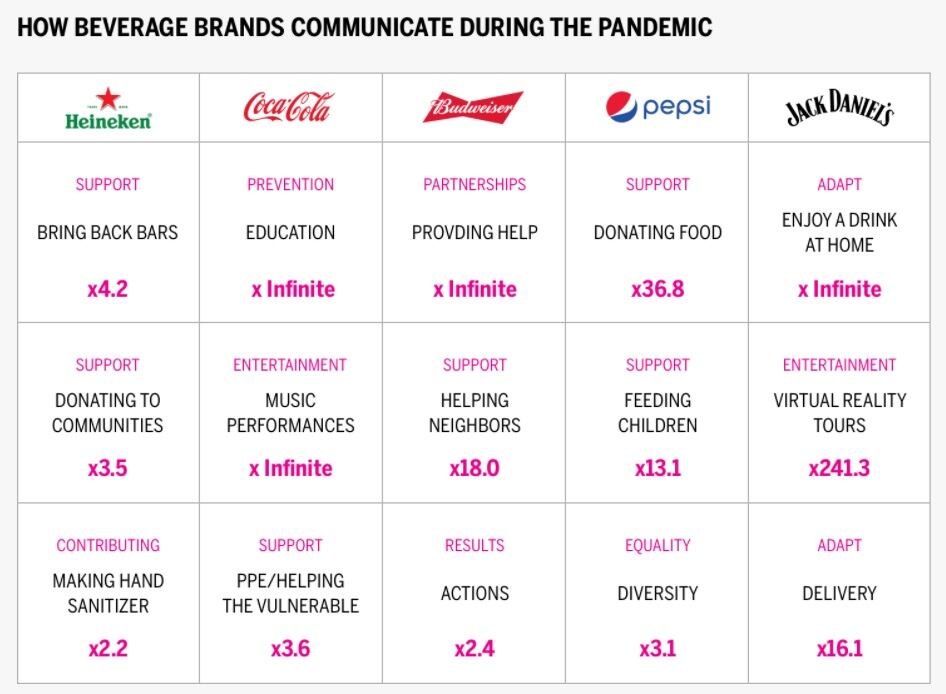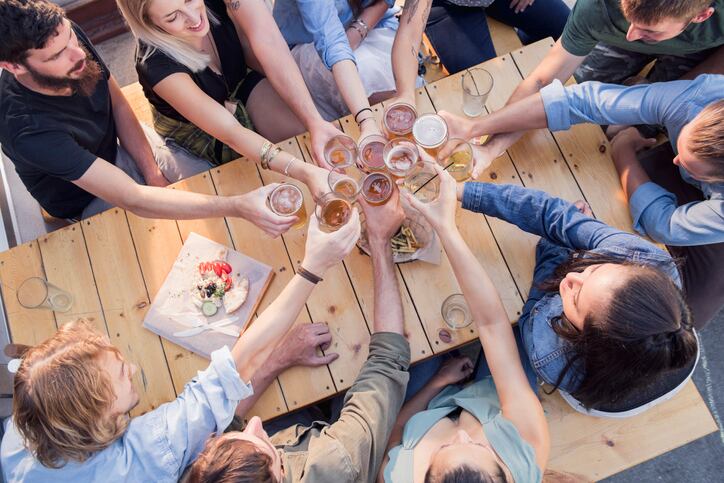One of the trends seen throughout the pandemic is a return to brands people know and trust: a trend outlined by beverage giants such as Coca-Cola and Molson Coors. And according to MBLM’s new Brand Intimacy COVID Study, beverage brands have got better at connecting with consumers over the last two years.
The report ranks big beverage brands based on the emotional connections they’ve created; as well as analyzing the messages used throughout the pandemic by consumers.
In 2021, Coca-Cola ranks #1 in the industry, while Pepsi rose to the #2 spot from #4 a year ago. The remaining top 10, in order, are Mtn Dew, Jack Daniel's, Heineken, Budweiser, Tropicana, Coors, Snapple, and Miller.
Heineken and Tropicana also improved their positions since MBLM's 2020 COVID study.
But how do brands create such ‘brand intimacy’, and what can we expect to see as the pandemic continues to evolve?
Beverages build pandemic connections
Overall, beverage brands have done well during the pandemic in maintaining and building their connections with consumers.
"Despite the hardships imposed by COVID on people and businesses, this period has actually drawn consumers closer to beverage brands and created stronger emotional relationships," notes MBLM. "Brand Intimacy performance for the category has increased by an average of 11% since before the pandemic, despite manufacturing and supply chain challenges."
Meanwhile, the 'can't live without' measure used by MBLM (which determines how essential a brand is to a consumer's life) has risen by an impressive 75%.
And this can translate into a willingness to pay more for a favorite brand, notes MBLM.
COVID communications
Beverage brands have addressed the pandemic in variety of different ways. In 2020, much of the focus was about the present moment: prioritizing the health of employees and customers, and the way brands were trying to help those in need.
In 2021, some brands have been using similar messaging to last year; others have new areas of focus. Often, communications became more concrete, centering on the impact of COVID and the tangible results brands are achieving.

“Coca-Cola, which had limited COVID messaging last year, now highlights the importance of education and information in fighting the pandemic by sponsoring music performances so people can relax and enjoy music and support vulnerable communities and the purchase of personal protective equipment,” notes MBLM.
“Pepsi continued and extended its emphasis on feeding the hungry and helping those in need.
“Budweiser highlights helping communities and partners, whereas Heineken supports trying to get bars reopened, their donations, and early help in supplying hand sanitizer during periods of shortage. Jack Daniel’s retains the core of its earlier communications on virtual events and highlights enjoying a drink at home.”
While it could be expected that 2021 has seen COVID-19 fatigue and a shift away from related communications, there has in fact been a 60% increase in the amount of pandemic communications these brands are producing versus last year, according to MBLM's research.
Building on the last two years
The key moving forward will be to embrace the strongest pandemic trends and incorporate them into branding and messaging, says MBLM.
“The continued impact and longevity of the pandemic requires beverage brands to think about maintaining strong emotional connections with current users and attracting new users in more carefully considered ways. Given that consumers relied heavily on e-commerce for the delivery of alcohol brands, determining new channels of engagement will be a key consideration for brand success.”
Brand Intimacy is defined as ‘the power of emotional connections between people and brands’. MBLM’s methodology for its rankings looks at a number of factors. These include the degree of overall positive feelings a customer has towards a brand; whether a brand exceeds expectations; if it reflects an aspirational image or admired values and beliefs; whether a brand is ingrained into daily rituals; or can create an association with moments of nostalgia, pampering or indulgence.
The research was carried out during the summer of 2021 among 3,000 US consumers.
Another change is a gradual return to dining out and bars, which have shifted the way consumers experience brands back to a more expected paradigm.
But as with anything to do with the pandemic, the way forward will be to be ready to react and adjust as a ‘new normal’ evolves.
"How beverage brands adapt and build on the past two years will be critical to future success. The category, while improving, could still perform at a much higher level, by building stronger emotional bonds with customers and acknowledging the past two years."

